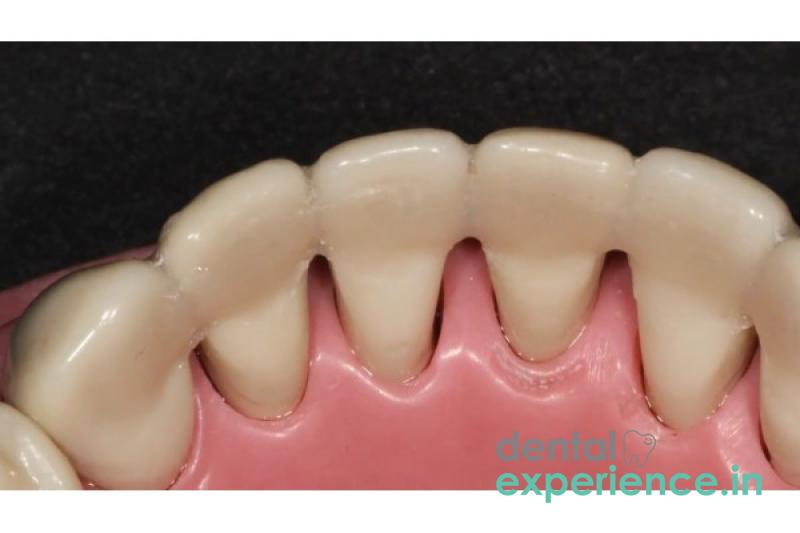You may have had a dental crown fitted in the past but what you may not know is whatever material they are made fr ..
Fast facts

Rs.500/tooth
Treatment Longevity :
Short/long Term
Treatment Duration : 30 minutes
Teeth that have become loose because of lost gum tissue can benefit from a new technique called dental splinting which attaches weak teeth together, turning them into a single unit that is stable and stronger than the single teeth by themselves. The procedure is most commonly performed on the front teeth.
The procedure is as simple as using composite material to attach, or splint, the loose teeth to the adjoining stable teeth. Tooth splinting is a common procedure that has gained popularity due to its effectiveness.
In dental splinting, teeth are joined together using a thin fibre reinforced wire thereby increasing their stability. This is a factor which allows them to function normally.
Treatment of these mobile teeth is often not very successful. The mobility is caused by a loss of supporting bone around the roots of the teeth. Even comprehensive periodontal treatment cannot replace this missing bone and the prognosis for these teeth is poor.
The most logical way to treat the mobility once the active periodontal disease is under control would be to splint these mobile teeth.
The most frequently used technique is to use orthodontic stainless steel wire, bonded on to the inside surface of the teeth with composite which acts as a splint.
In a relatively new technique for dental splinting mobile teeth a fibre reinforced composite periodontal splint stabilizes the mobile teeth and ensures a more comfortable chewing function for the patient.
In this technique, glass fibre strands embedded into a polymer bis GMA matrix (resin) are used to reinforce the composite white filling material, which splints the mobile teeth together.
The elasticity of the fibres is beneficial to the healing of the supportive dental tissue. A fibre splint constructed in this way will form a reliable integrated structure which will give a potentially long term solution to the problem of mobile teeth. The fibres are transparent and unnoticeable when covered with the tooth coloured composite filling material. It is therefore possible to create an aesthetically pleasing splint on the inside of the mobile teeth.
 Dr. Sreeja Aravind, MDS
Dr. Sreeja Aravind, MDS